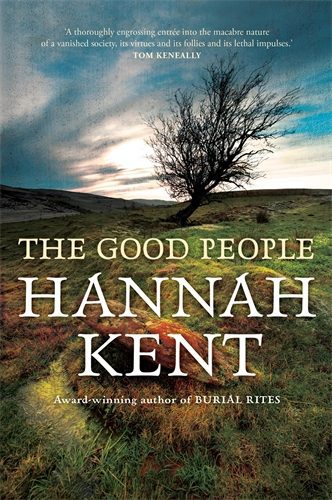Fairies today are popularly viewed as enchanted creatures that are usually harmless though sometimes playful, even mischievous, but also kind, helpful, beautiful, and usually disconnected from culture. In her novel, The Good People, Hannah Kent reminds us that fairies were once viewed as so frightening, you didn’t even say “fairies” too loudly for fear of attracting their attention.
The Good People is Kent’s second novel. Her first novel, Burial Rites, is based on the true story of Agnes Magnúsdóttir, a servant in northern Iceland who was condemned to death for murder. Magnúsdóttir was executed in 1829 and was the last woman put to death in Iceland. That was a beautiful and haunting novel. While researching that novel, Kent came across the story that inspired her second.
This time Kent transports us to a remote valley in south-west Ireland in 1825. Nóra Leahy’s husband, Martin, has dropped dead at the crossroads. This is the first in a series of tragedies in the valley, which cannot be accepted as meaningless and arbitrary. They are the result of failing to perform the right rituals, of curses, and of fairies.
 Increasingly, the community points its finger at Micheál, Nóra’s disabled four-year-old grandson. Nóra has been caring for him since the death of her daughter earlier in the year. Once healthy, Micheál is now unable to walk or talk, he wails through the night, and appears to be wasting away despite his ravenous appetite. To prevent gossip, Nóra keeps him hidden away and hires a teenaged servant, Mary Clifford, to help her.
Increasingly, the community points its finger at Micheál, Nóra’s disabled four-year-old grandson. Nóra has been caring for him since the death of her daughter earlier in the year. Once healthy, Micheál is now unable to walk or talk, he wails through the night, and appears to be wasting away despite his ravenous appetite. To prevent gossip, Nóra keeps him hidden away and hires a teenaged servant, Mary Clifford, to help her.
When neither the doctor nor priest can offer an explanation or remedy, Nóra and Mary take the boy to Nance Roche, the local “handy woman”. Nance has not only a mastery of herbs, roots, and remedies, she has “the knowledge” granted to her by the Good People. Nance confirms the rumours in the valley; Micheál is a changeling, a fairy child left in place of a human child stolen by the fairies. And she knows how to get him back.
The Good People is more than its plot. In fact, the plot has few surprises and is delivered slowly, but the story is compelling, its telling is poetic, and Kent creates a rich, and sometimes chilling, atmosphere. This is not just a book about what happens, but about what people believe and how those beliefs affect their lives. The folklore is wonderful enough, but the novel’s title carries a double meaning. The Good People is about fairies and it’s about people – good people who do terrible things. It’s particularly about women, as well as poverty, isolation, competing systems of thought, power and powerlessness.
It’s easy to ridicule these characters, but Kent put a lot of research into her novels. and she is respectful of her characters. Like Agnes Magnúsdóttir in Burial Rites, Nance Roche was a real person, and I love that Kent has given a voice to these women, no matter how fictionalised that voice may be. Historically, Agnes and Nance were judged, but Kent doesn’t judge them. She leaves it up to the reader to make up their own mind about them.


